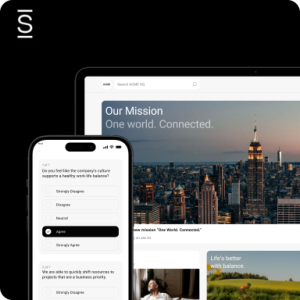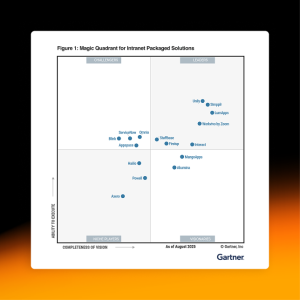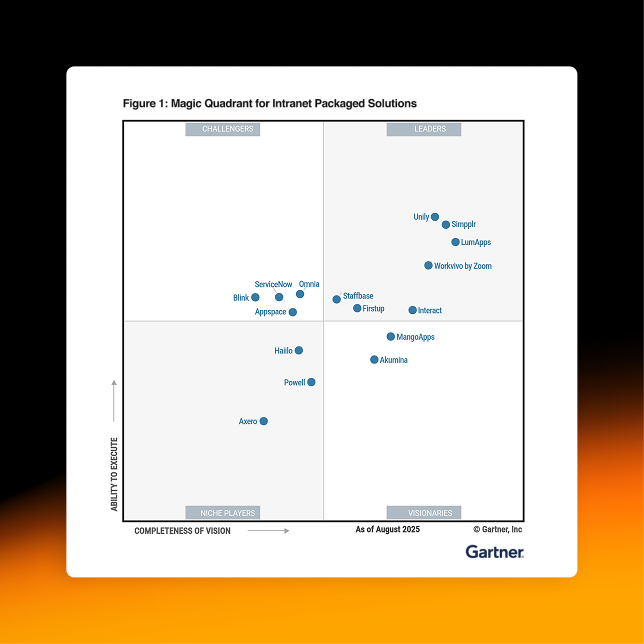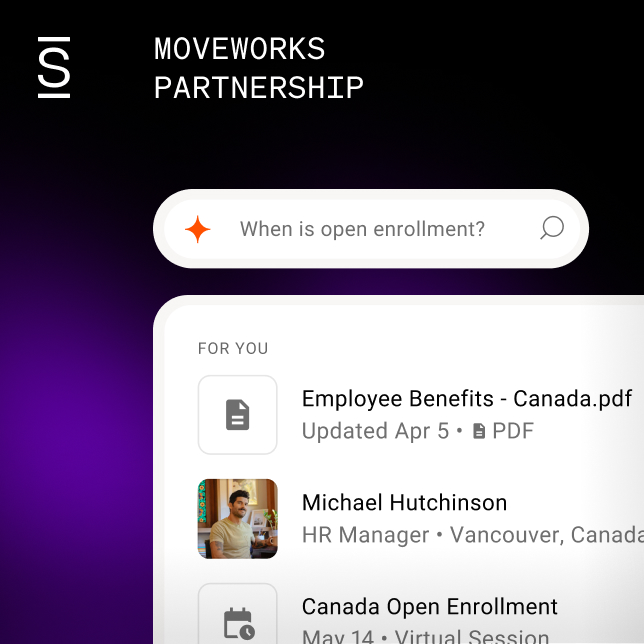Work-life balance definition
Work-life balance is the state of equilibrium where an employee can prioritize the demands of their career and personal lives equally. It’s about managing professional responsibilities while maintaining adequate time for family, relationships, hobbies, health, and personal well-being.
The concept involves setting boundaries so that work demands don’t overwhelm other important aspects of life. This might mean limiting work hours, avoiding constant email checking after hours, taking vacation time, or saying no to excessive overtime requests.
According to a Deloitte survey, 63% of employees and 73% of the C-suite reported that they aren’t able to take time off and disconnect. This highlights the pervasive challenge of achieving true work-life balance in today’s always-connected digital workplace.
- 1 Key characteristics of achieving work-life balance
- 2 What is work-life integration?
- 3 Importance of work-life balance
- 4 Why implementing work-life balance is so hard in the workplace
- 5 How to improve work-life balance
- 6 How leaders can support their employees’ work-life balance
- 7 How employers can support work-life balance in remote work environments
- 8 Enhancing work-life balance through Simpplr
Key characteristics of achieving work-life balance
The goal is to achieve a level of balance that meets an individual’s needs and priorities can vary depending on personal circumstances and stages of life. Here are the following characteristics of a healthy work-life balance:
- Regular time for relaxation and leisure activities
- Clear boundaries between work and personal life
- Ability to manage workload effectively without constant stress
- Supportive relationships with colleagues and loved ones
- Flexibility to accommodate unexpected events or emergencies
Achieving work-life balance involves consciously allocating time and energy to various aspects of life, including career, family, health, and leisure. It’s about dividing time equally and prioritizing activities based on individual values and goals.

What is work-life integration?
Work-life integration extends the concept of work-life balance by recognizing that work and personal life are not necessarily separate entities. Instead of setting rigid boundaries, work-life integration encourages fluidity and flexibility in handling both elements of our lives.
Individuals who practice work-life integration may combine work tasks with personal activities or vice versa, utilizing technology and flexible schedules to achieve more harmony. This approach acknowledges that specific job tasks may spill over into personal time. Still, it aims to create a holistic lifestyle where work and personal pursuits contribute to well-being.
Importance of work-life balance
Work-life balance is necessary for maintaining mental, emotional, and physical well-being in today’s never-ending hustle era. When individuals achieve a healthy balance between work and personal life, they experience reduced stress levels, improved mood, and increased overall satisfaction. This balance allows employees to perform better at work while still spending meaningful time with their families and pursuing personal interests outside the job.
Moreover, prioritizing work-life balance has a significant impact on organizational success. Research from the American Institute of Stress shows that work-related stress costs U.S. businesses around $300 billion annually due to absenteeism, turnover, and decreased productivity.
A strong company culture that supports work-life balance has a direct impact on employee retention. According to a 2024 Gallup poll, 59% of U.S. employees rate greater work-life balance and better personal wellbeing as very important, making better pay the second when considering a new job. This shift signals that today’s workforce values quality of life just as much — if not more — than financial compensation.
When organizations prioritize work-life balance through initiatives like flexible hours, remote work options, mental health support, and realistic workloads, they create an environment where employees feel heard, valued, and supported. Happier, healthier employees are more productive, more engaged, and more likely to stay for a long time.
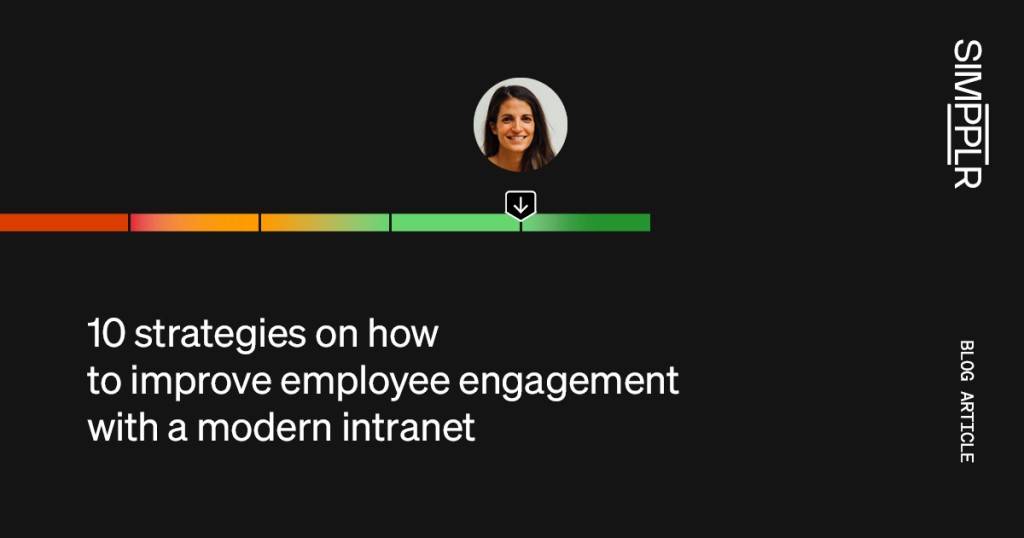
5 signs of an unhealthy work-life dynamic
- Persistent fatigue: Constant exhaustion despite adequate rest, indicating an imbalance between work demands and personal rejuvenation.
- Difficulty disconnecting: Unable to mentally disengage from work during non-work hours, resulting in a lack of relaxation and downtime.
- Neglected relationships: Prioritizing professional tasks before spending quality time with loved ones leads to strained personal relationships and feelings of loneliness.
- Lack of personal time: Rarely engaged in activities outside of work-related tasks, indicating an inability to maintain a fulfilling personal life.
- Reduced job satisfaction: A decrease in overall satisfaction and motivation at work due to severe stress and a lack of work-life balance.
Related: 6 signs of employee burnout: what coffee won’t fix
Why implementing work-life balance is so hard in the workplace
Research conducted by the World Health Organization suggests that work-related stress is a significant occupational health risk in many countries, contributing to various physical and mental health issues.
Striving for work-life balance is not solely an individual quest but a shared responsibility within organizations. This collective effort encounters various challenges along the way:
- Cultural norms: One of the primary obstacles is the deeply ingrained cultural norm of “workaholism,” where long hours and constant availability are glorified. It makes it difficult for individuals to prioritize personal well-being alongside work responsibilities.
- Structural barriers: Heavy workloads, tight deadlines, and a lack of resources create structural barriers and knowledge silos. This hinders effective collaboration and communication as employees often don’t have the time or capacity to share information, align with other teams, or document processes.
- Resistance to change: Both employees and management may resist changes aimed at promoting work-life balance, highlighting the need for effective communication and collaboration to overcome resistance and gain support for necessary adjustments.
Overcoming these issues will take a collaborative effort from all levels of the organization to prioritize employee well-being and establish a supportive work environment conducive to attaining work-life balance.
How to improve work-life balance
With technology blurring the lines between professional and personal time, many employees find themselves struggling to disconnect from work responsibilities, leading to stress, burnout, and decreased overall life satisfaction.
Here are ten proven strategies to enhance your work-life balance:
1. Set clear boundaries and working hours
Create clear boundaries between work and personal life by setting and adhering to particular work hours. To ensure undisturbed personal time, don’t check emails or take work calls outside of these hours.
2. Take regular breaks
Schedule short breaks throughout your workday to recharge mentally and physically. Take a 10-minute walk, grab some coffee, or just step outside for fresh air. Even five minutes away from your screen can help reset your focus and improve productivity.
3. Exercise regularly and eat healthy
Include regular exercise and healthy eating habits in your daily routine to maintain physical and mental wellness. Exercise can help reduce stress, boost energy levels and enhance mood and sleep while a balanced diet provides essential nutrients to support overall health and vitality.
4. Prioritize tasks and time-blocking
If you’re juggling multiple roles, prioritize tasks effectively and use time-blocking techniques. Communicate openly with both employers about your schedule constraints and look for synergies between roles that can increase efficiency. Learn to say no to extra commitments in order to avoid burnout.
5. Find something you enjoy outside of work
Outside of work, pursue hobbies or activities that bring joy and fulfillment. Whether it’s working on a passion project, spending time with loved ones, or discovering new interests, investing in activities outside of work can help renew mind and spirit.
6. Use your vacation time
Schedule regular breaks and vacations to rest and refuel. Whether it’s a quick weekend trip or a longer vacation, taking time off helps you to escape from professional concerns and focus on refreshing your mind and body.
7. Seek support
If you are feeling overwhelmed, don’t be afraid to seek help from friends, family, colleagues, a coach, or a therapist. Whether it’s asking for assistance with work or simply having someone to talk to, having a support system in place can help you navigate problems and maintain balance in your life.
8. Have a 1:1 with your manager
Schedule a weekly or a monthly meeting with your manager to discuss realistic goals, expectations, and any challenges you’re facing. These check-ins provide a dedicated space to align on priorities, clarify responsibilities, and ensure your workload is manageable. Ask about flexible arrangements, workload adjustments, or support resources available to maintain better balance.
9. Delegate responsibilities
Identify tasks that can be handled by team members or outsourced. Trust colleagues with appropriate responsibilities and provide clear instructions. At home, share household duties with family members to reduce your overall workload and stress levels.
10. Reevaluate your work
Regularly assess your workload, responsibilities, and goals to ensure they align with your capacity and priorities. Consider ways to align your work with activities that offer a sense of purpose and fulfillment. While work can’t fulfil all the needs, it should offer moments of accomplishment and connection.
How leaders can support their employees’ work-life balance
Leadership plays a critical role in shaping a culture that supports work-life balance. As leaders, the objective is to empower employees to do more with their time in order to increase output while preventing burnout. However, there’s a disconnect.
Only 56% of employees think their company’s executives care about their well-being, while 91% of the C-suite think their employees believe they care about it. This perception gap reveals a fundamental communication problem between leadership intentions and employee experience, highlighting the need for more visible and tangible support initiatives.
Here are some ways leadership can support their employees’ work-life balance:
1. Lead by example
Managers play a crucial role in translating leadership values into everyday actions. One of the most effective ways to promote work-life balance is by modeling it themselves. Set realistic work hours, take regular breaks, and respect boundaries around time off. When managers demonstrate that it’s okay to disconnect and prioritize well-being, it gives employees permission to do the same — without guilt or fear.
2. Provide flexible work arrangements
Give employees flexible work alternatives, such as flexible hours or remote work, to meet their specific demands and preferences. Such work arrangements enable employees to better manage their workloads and personal obligations, leading to increased happiness and productivity.
3. Encourage time management
Encourage employees to prioritize their activities, set realistic goals, and make the most use of their available time. Employees can benefit from receiving time management advice and resources like productivity tools to help them balance their work and personal duties better.
4. Promote work-life integration
Work and personal life should complement rather than compete with each other. Encourage employees to find ways to incorporate personal activities and interests into their workday, such as taking short breaks for exercise or scheduling family events during non-peak work hours.
5. Provide support and resources
Be proactive in addressing employee concerns about work-life balance and offer assistance and resources as needed. This could include employee support programs, stress management training, or access to counseling services. Managers can help employees cope with stress and maintain a healthier work-life balance by displaying empathy and understanding.
7. Celebrate their wins
Recognizing and celebrating your people enhances well-being, drives motivation, and increases engagement — leading to significant business results. According to Harvard Business Review, consistent, specific appreciation boosts morale, productivity and retention.
Use Simpplr’s unified Recognition and Rewards solution to elevate your recognition strategies with tailored and scalable solutions that ensure every bit of praise hits home.
How employers can support work-life balance in remote work environments
As remote work becomes more common, employers face both opportunities and challenges in helping their employees balance work and personal life. Remote work is great because it lets employees manage their schedules and blend work with their personal lives. But it also has its downsides.
One big challenge is that it’s hard to separate work and home life when they happen in the same place. This can lead to people working longer hours and feeling stressed. Also, without the office buzz, some folks might feel lonely.
Additionally, the technology we use for remote work can make it even harder to switch off. According to a survey by Buffer, 22% of remote workers struggle with unplugging after work, leading to feelings of burnout and decreased overall well-being. With emails popping up and virtual meetings happening all the time, taking a break is tough. When work and chill time blur together, it’s easy for remote workers to feel not so great overall.
So, while remote work has its perks, employers must find ways to help their team balance work and life. Here’s how you can do it:
1. Establish clear expectations
- Clearly state work hours, availability, and what needs to be done to ensure everyone knows what’s expected.
- Keep things clear to avoid confusion among remote team members about what they should do and when.
2. Encourage regular breaks
- Remind employees about the importance of taking breaks to relax and recharge during the workday.
- Please encourage them to step away from their screens and do something refreshing, like going for a walk or doing a quick stretch to stay energized.
3. Provide supportive resources
- Offer access to virtual wellness programs and mental health resources to help employees care for their physical and mental well-being.
- Provide ergonomic equipment to ensure employees are comfortable working remotely and avoid physical strain.
4. Encourage connection and collaboration
- Create opportunities for remote team members to connect through virtual meetings, team-building activities, and informal chats
- Cultivate a sense of belonging and camaraderie among the team to combat feelings of isolation and enhance work-life balance in a remote work setup
5. Recognize employee sentiment
- Implement regular surveys or feedback mechanisms to gauge employee satisfaction regarding work-life balance and well-being
- Actively listen to employee feedback and take necessary actions to address concerns and improve work-life balance programs
6. Adopt technology that matters
- Invest in modern intranet solutions like Simpplr to personalize employee experiences, facilitate two-way communication, and provide centralized access to resources, information and company updates
- Implement mobile-friendly intranet solutions to enable seamless access to work-related information and communication channels from anywhere, promoting flexibility and remote work opportunities
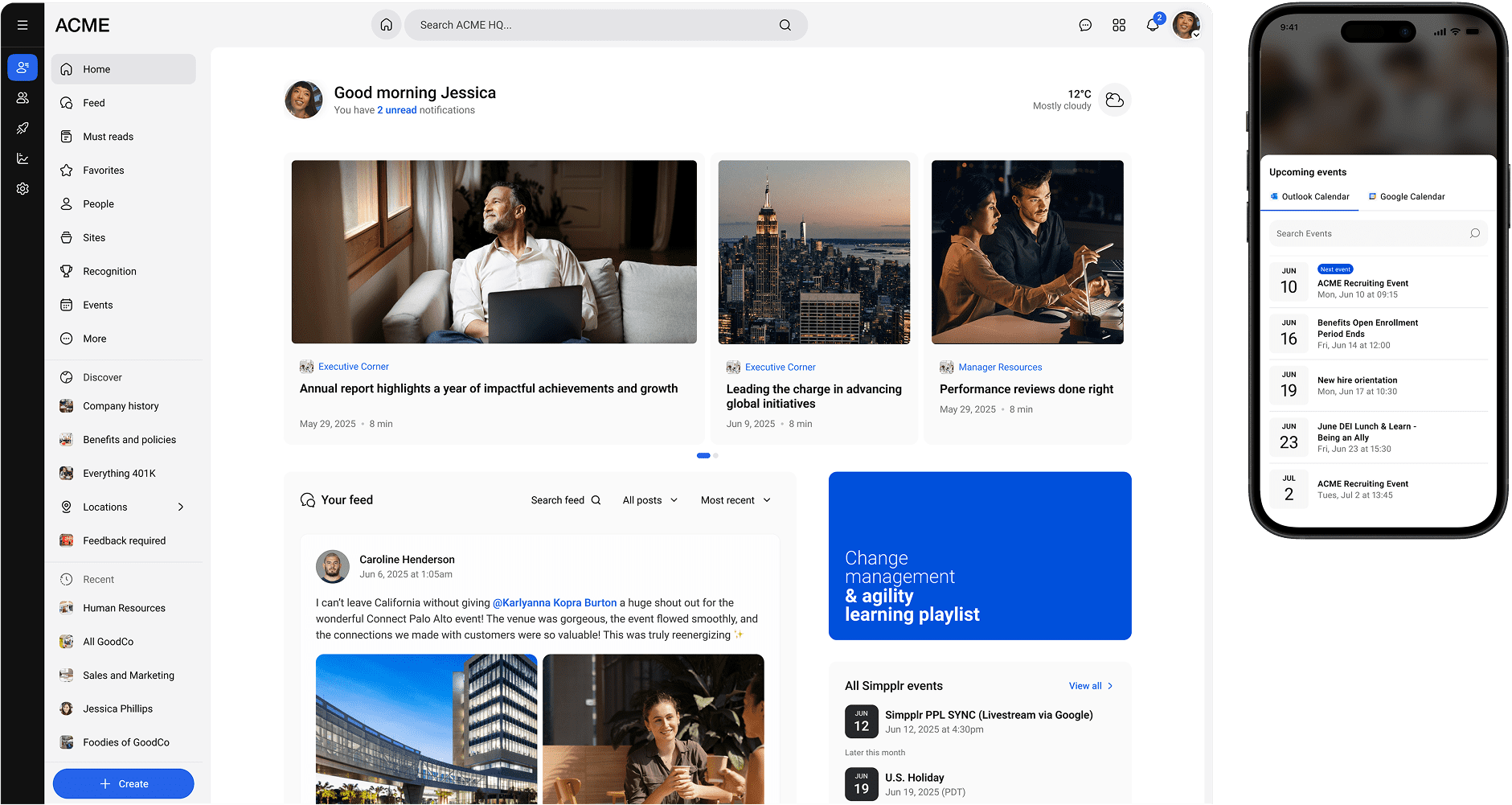
Enhancing work-life balance through Simpplr
Creating a healthy work-life balance is more important than ever. As organizations attempt to improve their employees’ well-being, the necessity for cutting-edge solutions to assist work-life balance efforts becomes clear.
Simpplr’s AI-powered intranet platform revolutionizes employee experiences by delivering seamless and personalized interactions at scale. By unifying employee engagement, enablement, and services within a single platform, Simpplr ensures that every employee can perform their best work from anywhere.
With Simpplr’s AI Assistant, employees can effortlessly resolve work-related queries and issues, boosting efficiency and productivity. The platform’s built-in survey features enable organizations to capture detailed feedback, including insights relevant to work-life balance, and take proactive steps to address employee needs.
In addition, Simpplr’s recognition and rewards features empower organizations to create a positive company culture and celebrate employee achievements, further enhancing employee satisfaction and well-being. With Simpplr, organizations can unlock the full potential of their workforce while prioritizing work-life balance.
Ready to learn how Simpplr can enhance work-life balance in your workplace? Request a demo today!
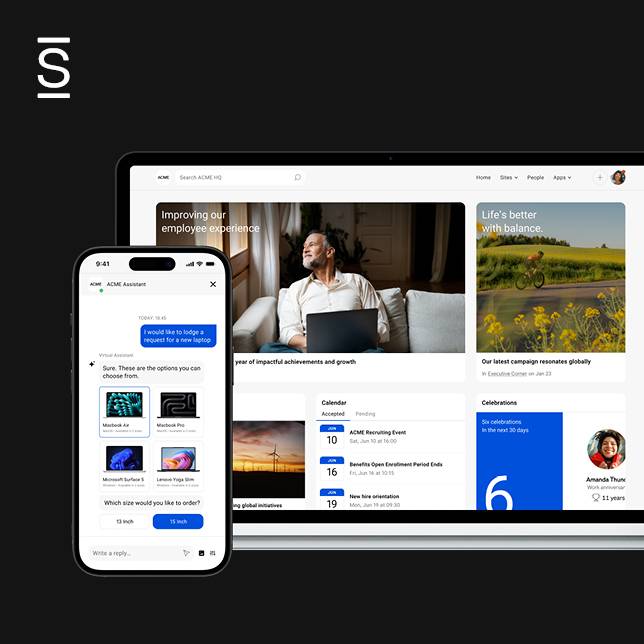
Watch a 5-minute demo
See how the Simpplr employee experience platform connects, engages and empowers your workforce.
- #1 Leader in the Gartner Magic Quadrant™
- 90%+ Employee adoption rate


